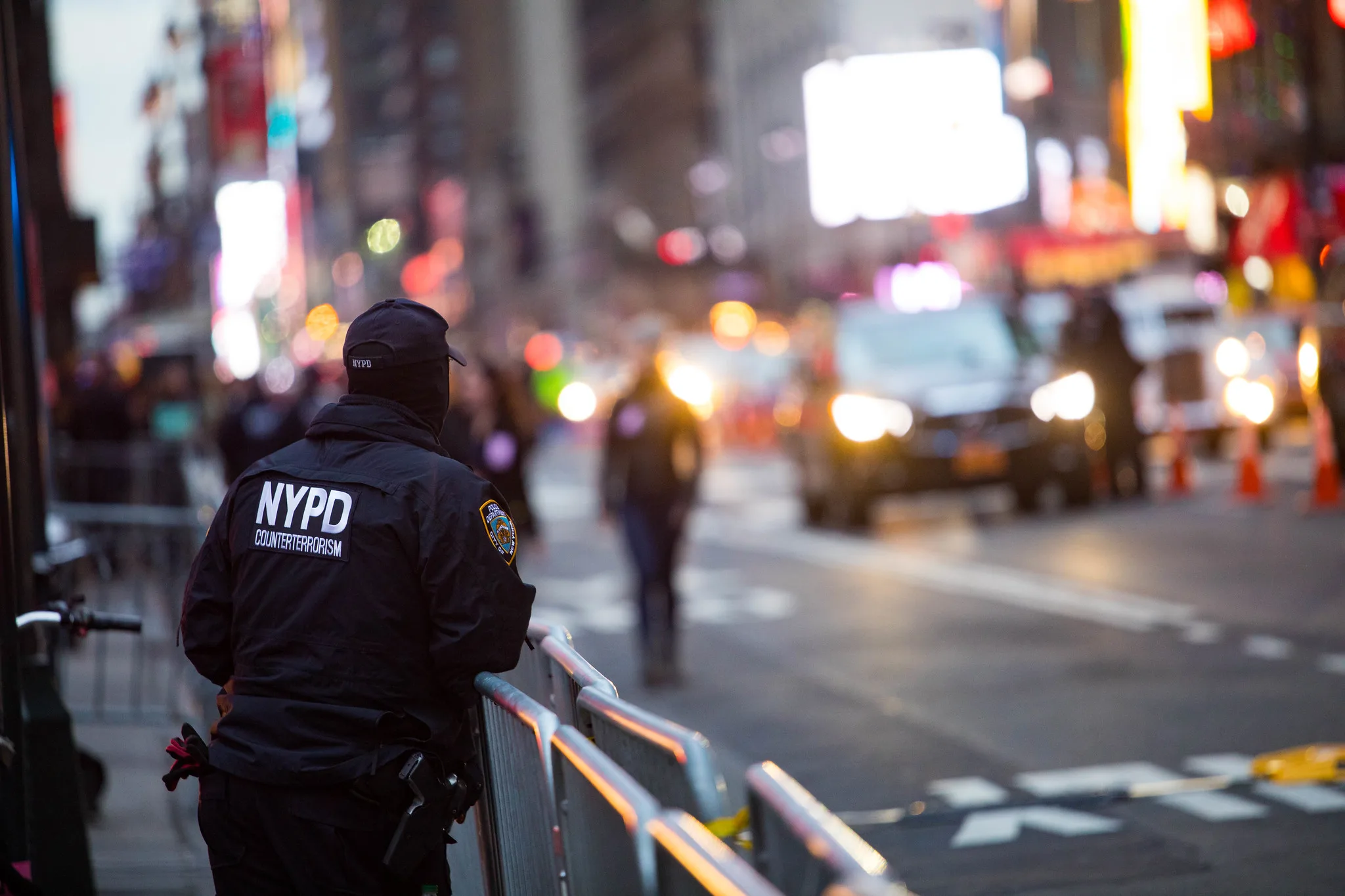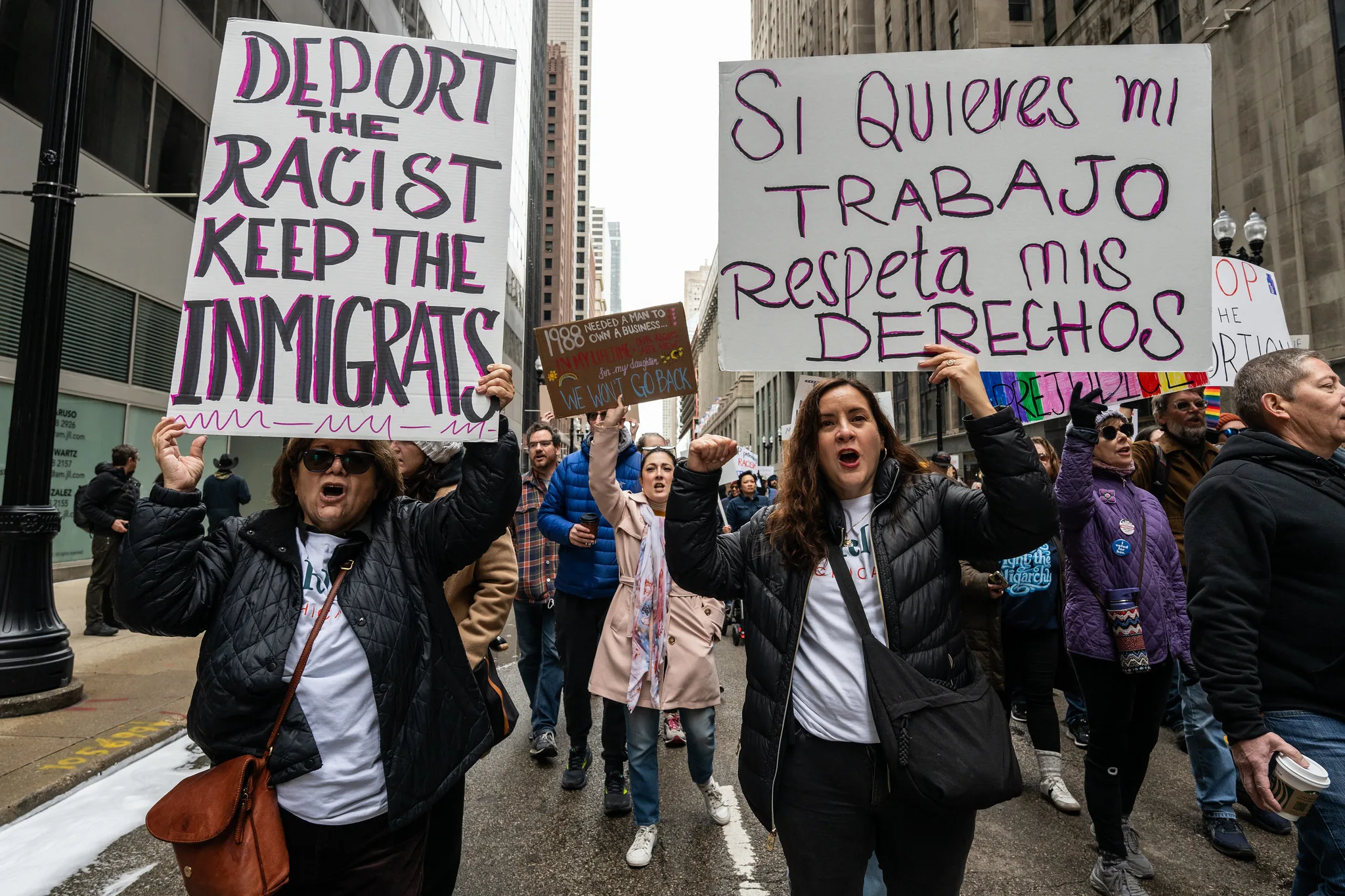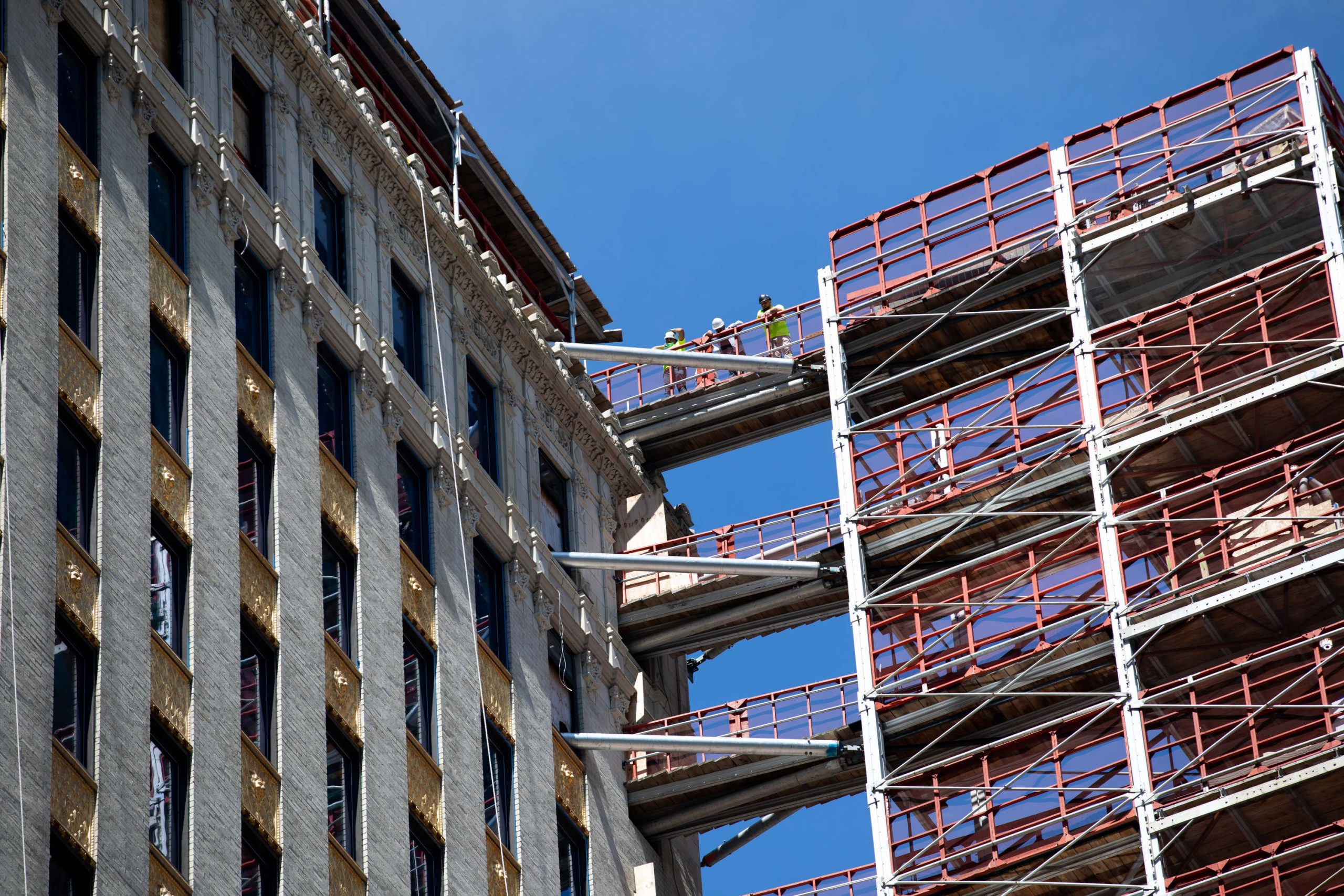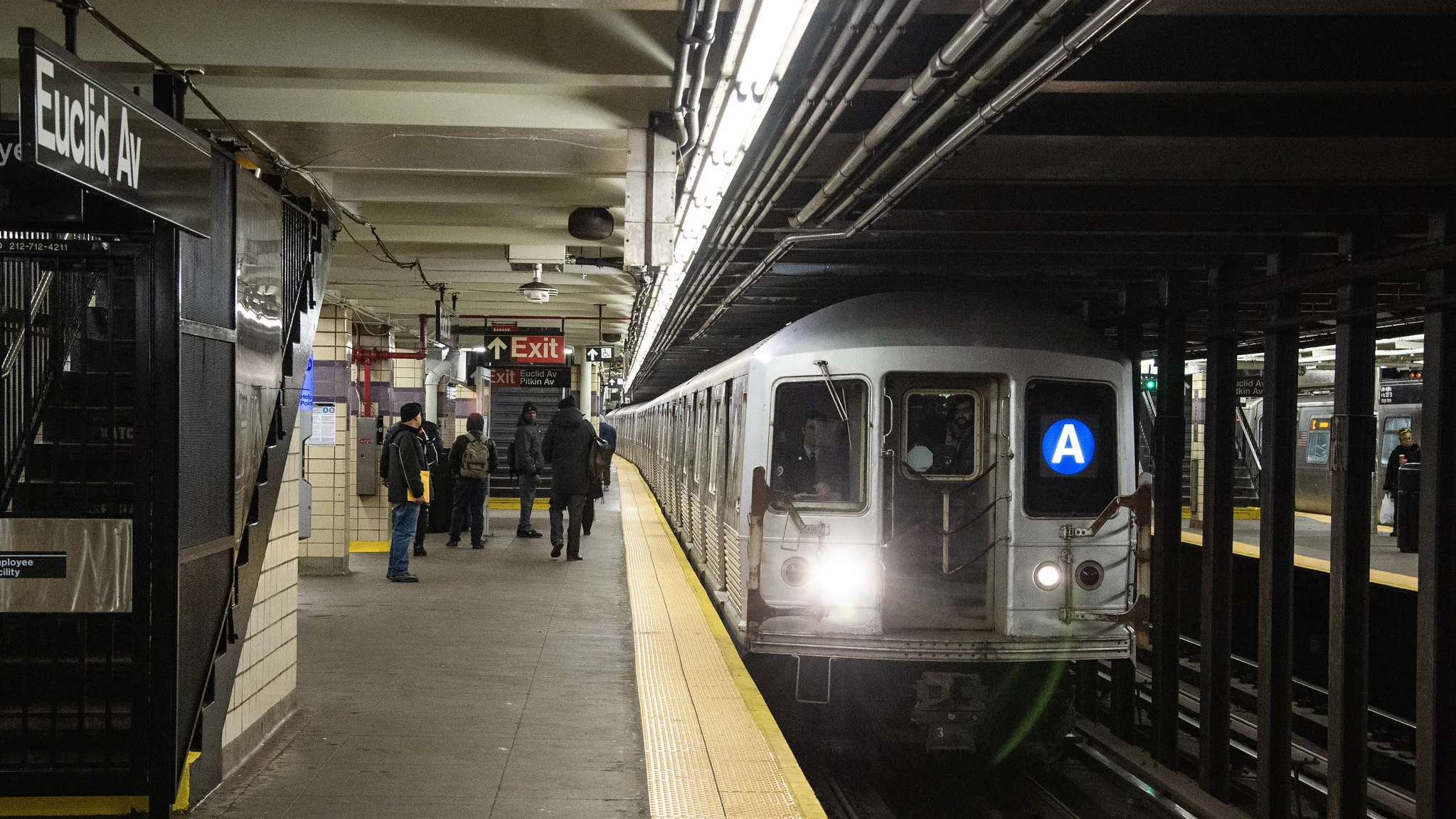It was 5:30 p.m. on January 22, and darkness was beginning to fall. Jenny Kong, owner of Sam Wai Liquor Store in Chinatown, peered out the window of her shop, a business she has run for almost three decades. The street outside was nearly empty. “Probably not much business today,” she thought — a reality she had grown used to as the pandemic took its toll on the neighborhood.
Then the door swung open. A man walked in briskly and demanded money. In all her years running the store, she had never faced this kind of situation. Thoughts raced through her mind: What if I refuse? Does he have a weapon? Instead of resisting, she decided to step outside.
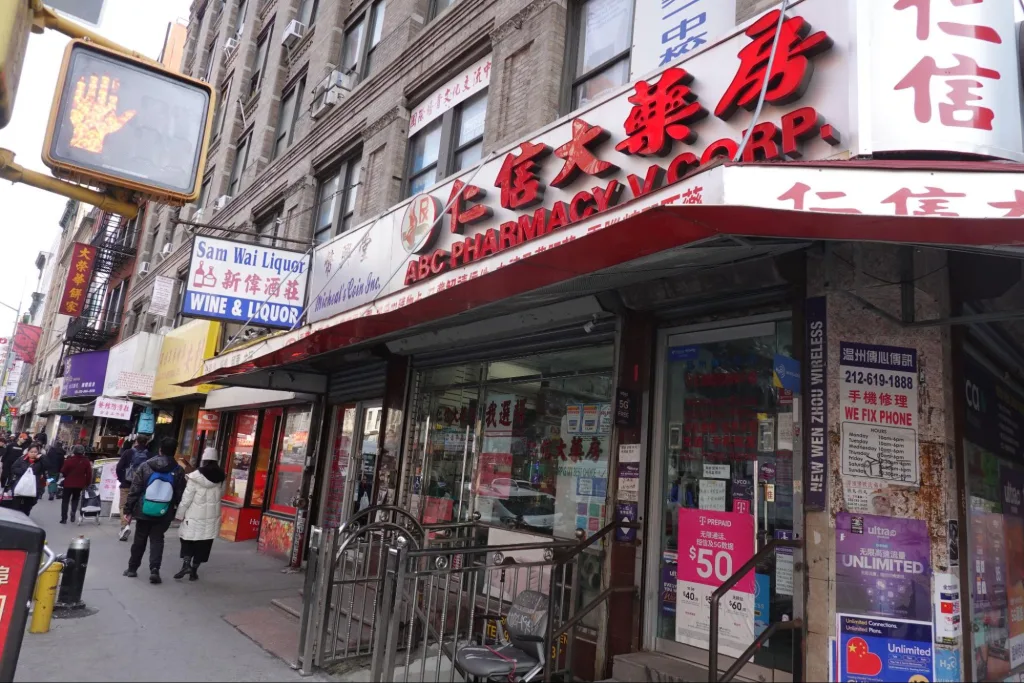
The man darted behind the register, grabbed $1,200, and fled. Kong called the police after he was gone. “What could I do? It’s impossible for me to fight him,” she recalled.
But Kong’s experience was not isolated. The suspect behind Kong’s robbery, Benedict Wesseh, also allegedly stole $700 from Great Taste Bakery, just around the corner. And about two months earlier, he had walked into ABC Pharmacy next door to Kong’s store and allegedly threatened employees by falsely claiming he had a gun. He made off with $350, according to the NYPD.
Immigrant New Yorkers like Kong describe a pervasive sense of fear in their communities. But, Mayor Eric Adams and the NYPD report that crime has fallen in the city with NYPD data showing a drop in seven major felony offenses. However, non-seven major felony offenses have surged across the city since 2020 with some areas seeing the highest rates in decades, according to Documented’s exclusive analysis.
These non-major crimes add up to a sense of disorder, experts say, where residents feel an acute sense of lawlessness across the city regardless of the danger they face. Like Kong, many immigrant New Yorkers who spoke with Documented say they have become more disillusioned with criminal justice reform and are welcoming tough-on-crime politics. Kong said she didn’t know any of Wesseh’s history before the robbery but noted, “The situation has never improved.”
Yu Lu, a 77-year-old Chinese immigrant who visits the Chinese-American Planning Council Open Door senior center in Chinatown every week, echoed these concerns. “Politicians talk a lot, but every day I read the Chinese newspapers, and I see so many crime reports. Things aren’t getting better; they’re getting worse.”
Major Crime vs. Other Crime
On Election Day, Documented spoke with roughly 40 immigrant voters in 12 neighborhoods with high foreign-born populations across four boroughs. The majority of them said they voted for Donald Trump. Contrary to the city’s talking points about a city freed of crime, many cited public safety as a top concern and a key reason for why Trump earned their vote, with several saying they switched their vote to the Republican party because they worried about the influx of migrants to New York and the city’s increase in crime.
Also Read: Pro-Trump Sentiment High on Election Day Among Immigrants
This disconnect between the city leadership and public perception led us to investigate why this sense of insecurity is so pervasive. We analyzed 24 years of historical NYC crime data (2000 to 2024) which included seven major felony offenses — murder, grand larceny, felony assault and other charges — and seven non-major felony offenses — felony possession of stolen property, theft, fraud, felony dangerous weapon and other charges — as released by the NYPD.
According to the data, the city is seeing fewer murders and other violent crimes, but in specific neighborhoods, especially some of the immigrant-rich communities we visited on Election Day, there has been a significant increase in both major and other categories of crime.
East Flatbush, Chinatown and Jackson Heights (three immigrant-heavy communities in Brooklyn, Manhattan and Queens) all saw increases in both the major and non-major felony offenses compared to 2023, according to Documented’s analysis.
Notably, in 2024, these three neighborhoods reached their highest levels of non-seven major felony offenses in the past 24 years, according to the NYPD’s historical crime data from 2000 to 2024 by precinct. In 2024, the 67th Precinct, which serves East Flatbush, recorded 1,781 of these offenses — including fraud and dangerous weapon possession —the highest number in more than two decades.
When reviewing the major offenses in 2024, these three neighborhoods also saw increases of as much as 4% (East Flatbush) to 18% (Jackson Heights), compared to 2023, according to NYPD’s Historical Crime Data for seven major felony offenses. And, for the first time in 24 years, East Flatbush saw record-high levels of crime in certain categories beyond the seven major felonies, according to NYPD’s Historical Crime Data for “Non-Seven Major Felony Offenses” from 2000 to 2024.
Longtime Flatbush resident Rose Marie, an immigrant from Trinidad and Tobago who has lived in New York for 28 years and operates Paris Runway Boutique in Flatbush, said she remains skeptical about crime reduction. “Money is the root of all evil,” she said, “and everything boils down to money, guns, and power.” For privacy concerns, she provided only her first name.
In Manhattan’s Chinatown, business owners and residents told Documented they felt a persistent sense of insecurity. Coco Li is an employee at a travel agency in the East Broadway Mall. “I live and work here every day, and I constantly hear about thefts and robberies,” Li said in Mandarin. “Now, after 5 p.m., the streets are basically empty.”
Li pointed to the decline of the East Broadway Mall as evidence of Chinatown’s worsening conditions. Roughly 80% of the mall’s businesses have shut down, graffiti covers its entrance, and homeless individuals sleep inside at night.
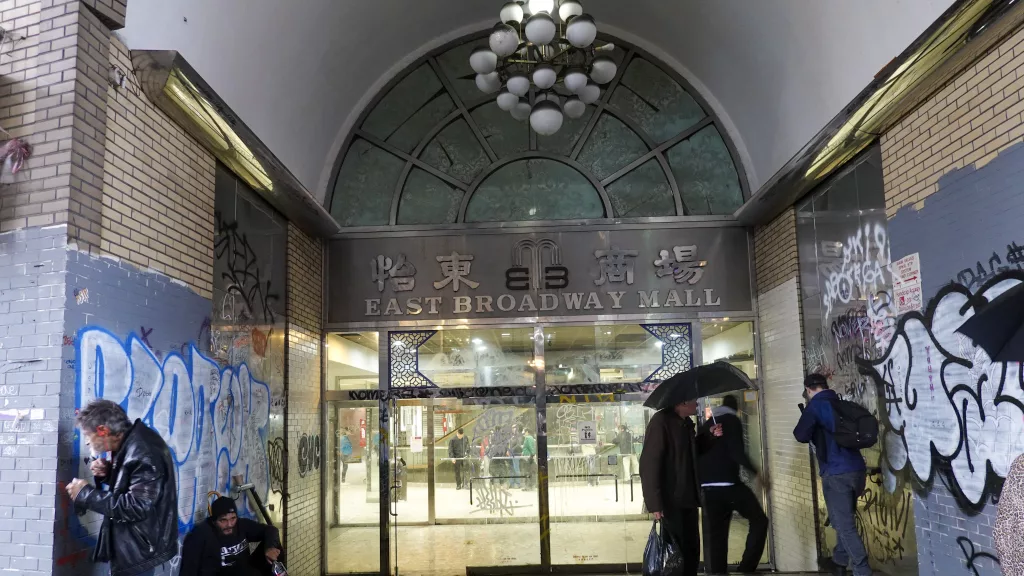
A Disconnect Between Perception and Reality
Behind this debate is the complexity of analyzing crime data. Experts and government officials rely on the NYPD’s numbers as guidance but caution against relying on them as a close reflection of reality.
Kayla Mamelak Altus, press secretary to Mayor Adams, told Documented that the results “speak for themselves.” “Mayor Adams has made sure that we use every tool in our toolbox to keep New Yorkers safe,” she said.
Mamelak Altus told Documented that the city has “accelerated [its] efforts” to reduce crime in neighborhoods that need it most. She cited zone-based policing and the deployment of officers to hot-spot locations experiencing spikes in crime. “[We] have seen significant results in neighborhoods like Chinatown, Flatbush, Jackson Heights, which have all seen overall crime drops so far this year.”
Also Read: Hate Crimes Against Migrants Surge in Manhattan Last Year, Even as Overall Numbers Fall
Citing numbers from NYPD’s Comp Stat from Jan. 1 to March 23 this year, she added: “Overall crime citywide was down last year and is down by double digits year-to-date, and since we took office, homicides and shootings have plummeted — down approximately 23 percent 42 percent, respectively — and transit crime has been down for two straight years and continues to trend down by double digits.”
Loyda Colón, executive director of the Justice Committee, a grassroots organization combating police violence and systemic racism in New York City, also explained that data showing a rise in arrests and summonses for misdemeanors may reflect the Adams administration’s aggressive policing tactics, not a rise in crime.
“Under Adams, the NYPD has ramped up broken windows policing, flooding communities with officers who target low-level offenses and criminalize poverty, homelessness, and mental illness,” Colón stated, and noted that the administration called for investment in stable housing, quality education, and accessible healthcare instead of “doubling down on failed policies of over-policing and mass criminalization.”
Peter Moskos, a professor at John Jay College of Criminal Justice, said it’s important to note that crime statistics can be misleading because enforcement efforts influence reported numbers, especially for minor offenses. If there is an increase in reported lower-level crimes, it doesn’t necessarily indicate a decline in overall safety conditions, he said.
Also Read: People Tend To Believe Crime Is Up Even When Data Shows It’s Down
“The smaller the category, the less severe the category, the less good indicator it is of actual offenses,” he explained. “A lot of it just has to do with how much it was being policed.” He noted that murders and shootings provide a clearer picture of crime trends since they are less likely to be misclassified.
Despite Moskos’ point that shootings are a reliable indicator of actual crime levels, shootings are not exclusively included in NYPD’s “seven major felony offenses” category. (Data on shootings are included in NYPD’s CompStat 2.0.)
Likewise, “signaling” events like graffiti or widespread evasion of train fare, though not violent crimes, can create perceptions of disorder and government failure, said Richard Aborn, president of the Citizens Crime Commission of New York City, a nonpartisan nonprofit organization working to prevent the most extreme forms of violence in New York.
“You’ve seen pharmacies, drug stores, convenience stores, put plastic guards over everyday items, you have to call an attendant to get that item,” he said. “How does that make you feel? Now you think, oh my god, there’s crime all around me. That sends a bad message.”
He emphasized that the perception of crime lags behind the statistics. “We’ve had high crime rates since COVID, and the public is only now beginning to understand that crime rates [in NYPD’s major category] have come down,” he said.
However, those crime rates have not returned to pre-pandemic levels, which were about 30% lower, according to Documented’s data analysis.
Bail reform & criminal court proceedings
Many of the New Yorkers Documented spoke with cited bail reform as a lead driver in the dysfunction in their communities, however, studies have found that there is no correlation between the city’s 2019 bail reform policies and increased crime rates.
In 2019, New York enacted bail reform to eliminate cash bail for most misdemeanors and non-violent felonies, intending to reduce pretrial detention and prevent incarceration due to financial hardship. While many praised the measure, the reform was met with opposition, with critics linking it to rising crime. As a result, it has undergone multiple revisions since its introduction.
Colón criticized politicians for scapegoating immigrants and linking bail reform to rising crime, “all to justify expanding policing, increasing criminalization, and rolling back essential pretrial reforms,” she said.
“The facts show that bail reform didn’t increase crime in New York and may even contribute to reducing recidivism,” Colón said. “All New Yorkers deserve to feel and be safe, but true safety comes from addressing the root causes of crime and ensuring people have what they need to thrive.”
Aborn of the Citizens Crime Commission emphasized the importance of refining the policy rather than discarding it altogether. This could include granting judges greater discretion to detain repeat offenders while they await trial and reevaluating discovery reform. Discovery reform imposes strict timelines for prosecutors to disclose evidence, which will cause cases to be dismissed if prosecutors cannot meet those standards, according to Aborn.
This legislative session, state elected officials are also weighing substantive changes to reforms made to the discovery process in criminal court proceedings that went into effect in January 2020. These changes order prosecutors to hand over more evidence to defense attorneys in criminal proceedings on a faster timeline.
In a statement on March 24, Gov. Kathy Hochul said the 2020 reform “had unintended consequences resulting in procedural delays and dismissals that adversely affected victims and survivors of domestic violence and other crimes.” She added that since the reforms were enacted in 2020, the number of dismissed domestic violence cases in New York City has increased by nearly 15%. In 2023, 94.3% of cases in New York City were dismissed, compared to 49.1% outside the city.
Hochul also proposed changes to New York State’s Discovery Law in the budget to improve procedural fairness, expedite case processing, reduce pretrial incarceration, and protect witness information.
However, critics of the reform say it hamstrings district attorneys from keeping dangerous people in custody, and argue that Hochul’s statements on discovery reform misrepresent the reality of its impact.
“Cases are not being dismissed because a prosecutor fails to turn over a piece of paper. New York State’s highest court reaffirmed that ‘the statute does not require or anticipate a perfect prosecutor’ — only a diligent one. Diligent prosecutors are not penalized for inadvertent mistakes,” the Legal Aid Society wrote in a statement.
The organization also pointed out that dismissal rates in large population centers outside of the five boroughs have largely remained unchanged since the reform took effect, and dismissal rates in New York City can be explained by the New York City Police Department’s (NYPD) inability to comply with the law on lower-level offenses like misdemeanors.
“As we see every day in our criminal courts, the NYPD routinely fails to timely share case evidence with prosecutors. When explaining delays in court, prosecutors regularly report that officers won’t return their calls, won’t respond to emails, and won’t identify evidence that exists,” the organization stated.
Addressing crime and the public’s perception
New York City has seen historically low crime rates for an extended period, so even small increases can feel significant, Aborn noted. “So when you get these bumps in crime, your sense of fear goes way up. Now that’s not to say there aren’t particular neighborhoods where crime is still high and stubbornly high.”
He also advocated for community-based policing to rebuild trust, particularly in immigrant neighborhoods where fear of law enforcement can deter crime reporting. Studies and reports have highlighted that when immigrants feel secure in interacting with the police, they are more likely to report crimes and collaborate with authorities, which benefits overall public safety.
Meanwhile, in Flatbush, a first-generation Ghanaian immigrant and local resident was skeptical of more incarceration solving the problem. “I’m not a person who really approves of prison in any form,” he said.
He believes public safety issues should be addressed at its root rather than applying temporary fixes to high-crime areas, and advocated for community programs that reshape the opportunities and support provided to people. “I’m not looking for more police solutions. I’m looking for them to change habits and provide better opportunities,” he said.
